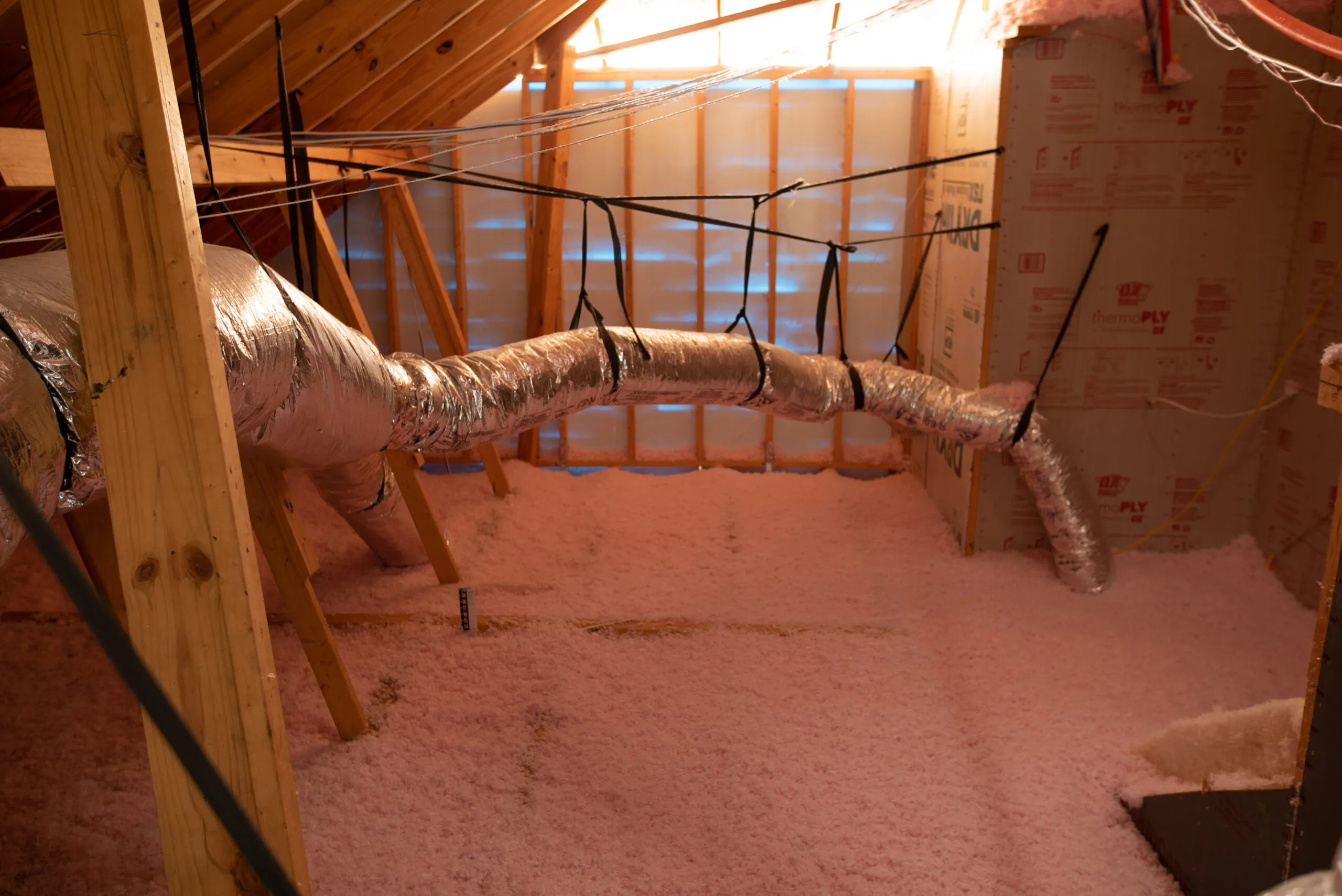🏠 Best Insulation Tips for Coastal Homes

Living by the ocean has its perks: fresh breezes 🌬️, stunning views 🌊, and milder winters. But coastal and humid climates also come with challenges—especially when it comes to protecting your attic from moisture, mold, and corrosion. Proper insulation is key to maintaining comfort and preventing costly damage.
🌧️ Why Coastal Homes Need Special Insulation Considerations
Homes in humid or coastal zones face extra moisture that can lead to:
❗Condensation in attic spaces
❗Mildew and mold growth
❗Corrosion of metal fixtures
❗Insulation breakdown over time
Ignoring these risks can compromise your comfort and lead to expensive repairs. That’s why insulation in such areas needs to be moisture-smart.
💧 Moisture: The Hidden Enemy of Insulation
Moisture is sneaky—it finds the tiniest cracks and compromises traditional insulation. To stay protected:
✅ Use moisture-resistant insulation that repels water
✅ Add vapor barriers to block humid air
✅ Seal attic access points like hatches and doors
This layered approach helps keep your attic dry and mold-free.
🧱 Choosing the Right Insulation Material for Humid Regions

Not all insulation materials are coastal-climate friendly. Here are the best options:
1. 🔒 Closed-cell Spray Foam
Water-resistant, airtight, and adds structural support.
Excellent for humid regions, though more expensive.
2. 🔥 Mineral Wool (Rock Wool)
Fire- and water-resistant
Ideal for batt insulation lovers who need moisture defense.
3. 🛡️ Fiberglass with Vapor Barriers
Only effective when professionally installed with modern moisture barriers.
💡 Pro Tip: Regular inspections help catch moisture issues early—even with the best materials.
🌬️ Proper Ventilation Is Non-Negotiable
Insulating without ventilation is like putting a lid on a steaming pot—it traps moisture and causes damage. Here’s what your attic needs:
Soffit vents to pull in cool, dry air
Ridge vents to let hot, moist air out
Gable vents for added crossflow
💨 Powered attic fans to move humid air out quickly
Good airflow = a longer-lasting attic and insulation system.
🦠 Preventing Mold in the Attic
Mold loves moisture and darkness—your attic is the perfect spot if not managed right.
✔️ Use mold-resistant materials (like treated cellulose or mineral wool)
✔️ Seal air leaks around ducts, chimneys, and fixtures
✔️ Inspect after storms for leaks or wet spots
✔️ Maintain steady airflow to keep humidity low
🚫 Once mold sets in, cleanup is costly—so prevention is your best defense.
🌊 Salt Air: A Unique Coastal Challenge
Salt air can corrode metals and degrade insulation faster. If you’re near the ocean:
Choose corrosion-resistant products labeled for coastal use
Protect ventilation systems and metal fasteners
Consider coastal-grade radiant barriers
🏗️ These steps help your attic structure and insulation last longer, with fewer repairs.
🧰 Coastal Weatherproofing Beyond Insulation
Insulation is just one part of a solid coastal defense. Combine it with:
✅ Sealing gaps in the attic floor and walls
✅ Storm-rated roofing materials
✅ High-performance underlayment
✅ Dehumidifiers for extra humidity control
🛡️ A full weatherproofing system brings peace of mind all year long.
🛠️ How Attic Fanatics USA Approaches Humid Climate Insulation

Attic Fanatics USA understands that coastal homes need tailored insulation plans, not cookie-cutter fixes. Their approach:
🕵️ Conduct attic assessments to spot hidden risks
🧱 Recommend materials ideal for high humidity
💨 Install ventilation and moisture barriers together for long-term protection
They focus on total climate control, not just stuffing insulation into place.
💡 Invest in Long-Term Comfort and Durability
Insulating a coastal home is about more than comfort—it’s about defending your investment from salt, water, and mold. When you:
Choose the right materials
Ensure proper airflow
Seal and maintain your attic
You get a healthier, longer-lasting home that thrives—no matter what the weather brings. 🌤️






